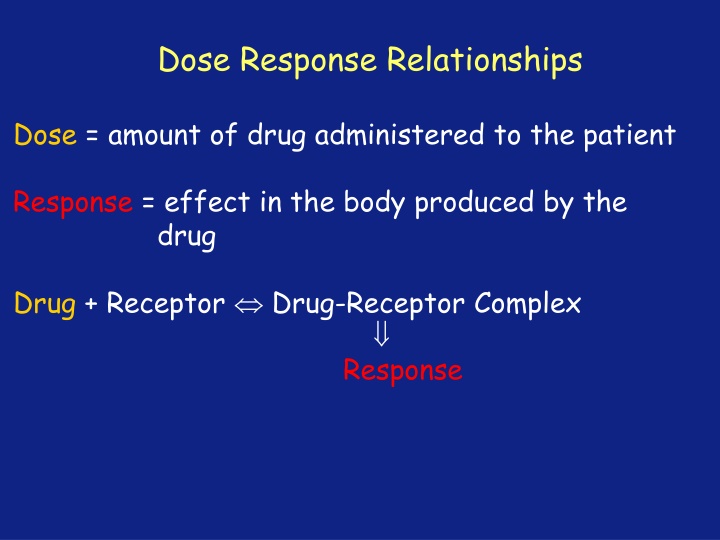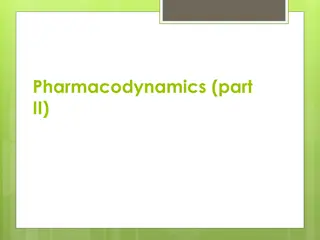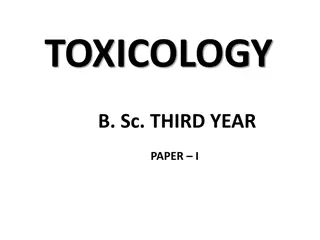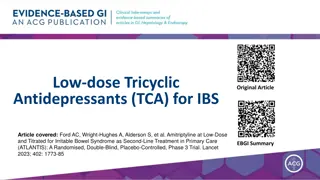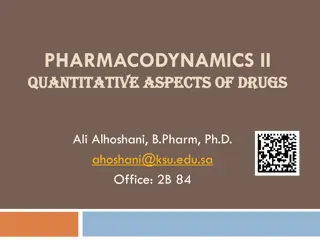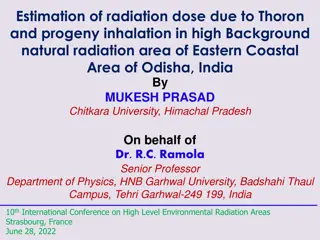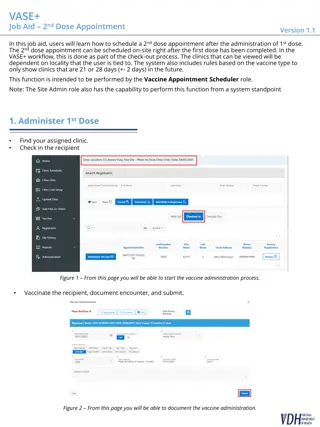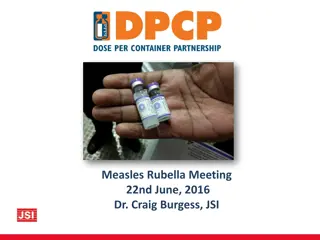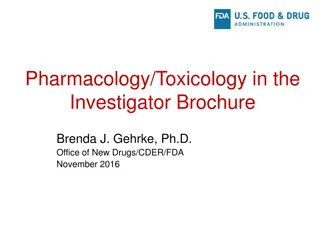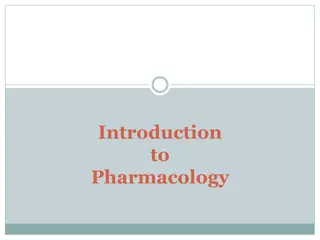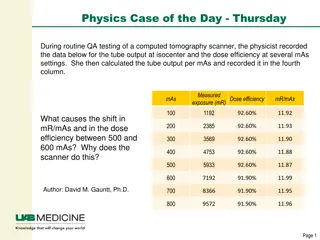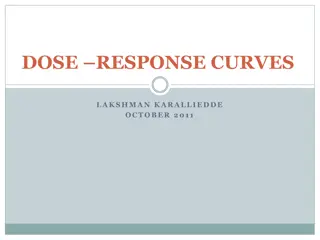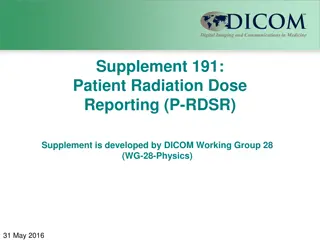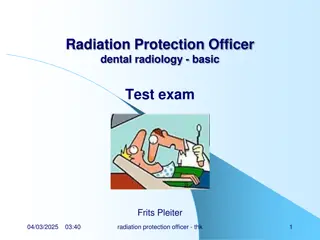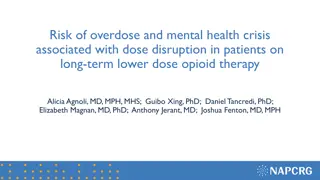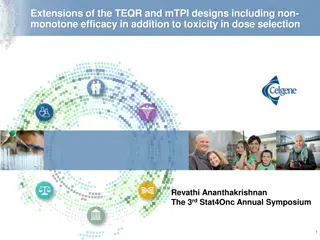Dose-Response Relationships in Pharmacology
Dose-response relationships in pharmacology involve the amount of a drug administered and the resulting effect in the body. Understanding concepts like potency, efficacy, and relative potency is crucial in drug development and treatment. Explore the key parameters such as ED50, toxicity levels, and the ability of drugs to interact with receptors to produce specific effects. Learn about agonists and antagonists and how they influence drug responses on a molecular level.
Download Presentation

Please find below an Image/Link to download the presentation.
The content on the website is provided AS IS for your information and personal use only. It may not be sold, licensed, or shared on other websites without obtaining consent from the author.If you encounter any issues during the download, it is possible that the publisher has removed the file from their server.
You are allowed to download the files provided on this website for personal or commercial use, subject to the condition that they are used lawfully. All files are the property of their respective owners.
The content on the website is provided AS IS for your information and personal use only. It may not be sold, licensed, or shared on other websites without obtaining consent from the author.
E N D
Presentation Transcript
Dose Response Relationships Dose = amount of drug administered to the patient Response = effect in the body produced by the drug Drug + Receptor Drug-Receptor Complex Response
100 3 4 Response 50 2 0 1 ED50 Log Drug Concentration [Molar] KEY PARAMETERS 1. Dose required to produce any effect at all. 2. ED50 = effective dose to produce 50% response 3. Dose required to produce maximum effect 4. Dose that produces a toxic response.
Efficacy (or Intrinsic Activity) ability of a bound drug to change the receptor in a way that produces an effect; some drugs possess affinity but NOT efficacy
Potency vs Efficacy Potency how much drug is required to produce a certain effect. 100 Response 50 2 0 1 ED50 Log Drug Concentration [Molar]
Relative Potency hydromorphone morphine codeine Analgesia aspirin Dose
Potency vs Efficacy Efficacy how large an effect the drug produces. 100 Response 50 2 0 1 ED50 Log Drug Concentration [Molar]
Agonists Drugs Drugs that interact with and activate receptors, they possess both affinity and efficacy. Agonist binds reversibly to the binding site Similar intermolecular bonds formed as to natural messenger Induced fit alters the shape of the receptor in the same way as the normal messenger Receptor is activated Agonists are often similar in structure to the natural messenger Agonist Agonist Agonist Induced fit R R E E R Signal transduction
Antagonists Drugs Drugs that interact with receptors but do not change them. They have affinity but no efficacy. Two types: Competitive (reversible) antagonists. Non competitive (irreversible) antagonists.
Competitive (reversible) antagonists M An An E R R Antagonist binds reversibly to the binding site Intermolecular bonds involved in binding. Different induced fit means receptor is not activated No reaction takes place on antagonist. Level of antagonism depends on strength of antagonist binding and concentration. Messenger is blocked from the binding site. Increasing the messenger concentration reverses antagonism.
Non competitive (irreversible) antagonists X Covalent Bond X OH OH O Irreversible antagonism Antagonist binds irreversibly to the binding site. Different induced fit means that the receptor is not activated. Covalent bond is formed between the drug and the receptor Messenger is blocked from the binding site. Increasing messenger concentration does not reverse antagonism.
Non competitive (reversible) allosteric antagonists Binding site unrecognisable Binding site Induced fit ACTIVE SITE (open) Receptor ENZYME (open) ENZYME Receptor Allosteric site Antagonist Antagonist binds reversibly to an allosteric site. Intermolecular bonds formed between antagonist and binding site. Induced fit alters the shape of the receptor. Binding site is distorted and is not recognised by the messenger. Increasing messenger concentration does not reverse antagonism.
Effectiveness, toxicity, lethality ED50 - Median Effective Dose 50; the dose at which 50 percent of the population or sample manifests a given effect; used with quantal dr curves TD50 - Median Toxic Dose 50 - dose at which 50 percent of the population manifests a given toxic effect LD50 - Median Toxic Dose 50 - dose which kills 50 percent of the subjects
Quantification of drug safety TD50 or LD50 Therapeutic Index = ED50
Drug A 100 sleep death Percent Responding 50 0 ED50 LD50 dose
Drug B 100 sleep death Percent Responding 50 0 ED50 LD50 dose
